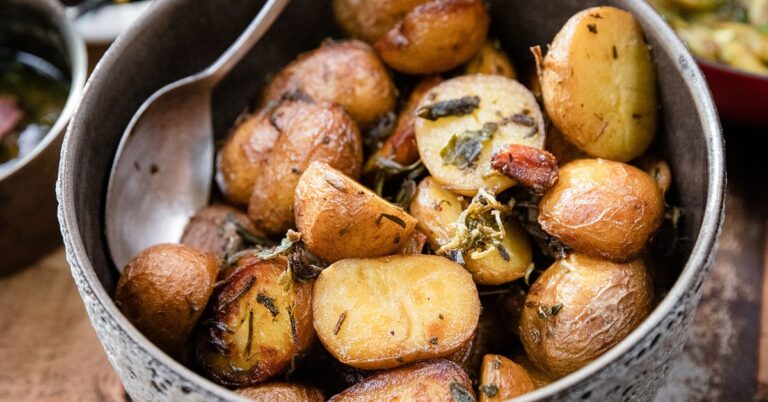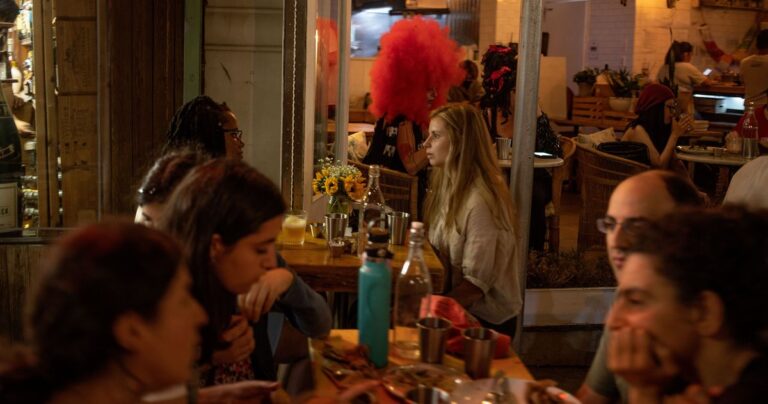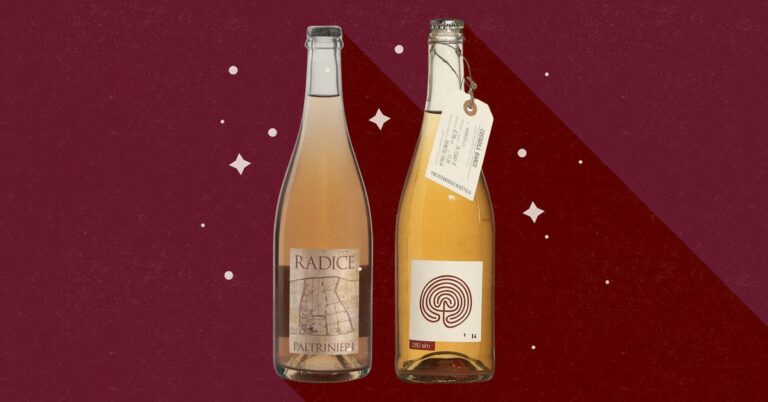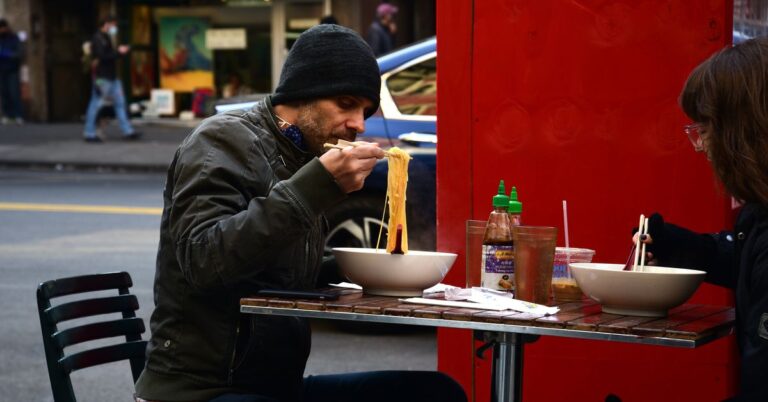What Does It Mean for Food to Be ‘Arabesque’?
To be from the Maghreb and Mashriq — or what is, to many Western minds, the regions of North Africa and the Middle East, respectively, where Arabic is widely spoken — is to have a mental list of which borders you can and cannot cross. I know where to ask to not get my passport stamped, where I need to travel on a second passport, and where I can’t go at all.
To be from this part of the world is also to know that as much as borders can separate communities that mixed freely before the advent of the nation-state, those same borders do not always apply to food or culture. Throughout the Maghreb and Mashriq — which encompass regions from Morocco to Iraq, as well as the countries of the Arabian Peninsula further to the south — the use of certain ingredients will change, techniques shift or evaporate altogether. This gamut has nothing to do with today’s borders — and everything to do with climate, trade, empire, and taste.
Although the vast majority of food and cookbook writers still choose the national framework when writing about the food of the Arabic-speaking world in everything from features to the latest Phaidon one-stop shop for {Insert-Country-Name-Here} book, there’s an increased awareness of the problems of national cuisines — posed first by Claudia Roden in her 1968 classic A Book of Middle Eastern Food, with its focus on Egypt, Lebanon and Syria; and more recently in critical volumes like Making Levantine Cuisine. A growing cadre of cookbook writers, such as Greg and Lucy Malouf, now look to a regional framework, featuring dishes from places as disparate as Morocco to Iran.
The Arabesque Table, Palestinian writer Reem Kassis’s recent follow-up to her 2018 cookbook The Palestinian Table, upholds this regional narrative of the gastronomic Arab world: one that is borderless because, as she writes, “the very idea of a national cuisine is a relatively recent construct, rising only in the 18th and 19th centuries with the rise of the nation-state.” With a title inspired by the design of Kassis’s kitchen table, The Arabesque Table purports to draw on the food cultures of everywhere from Iraq to Morocco and occasionally relies on historical record, including the 10th century Kitab al-Tabikh (Book of Cooking), and 15th century Kitab Wasf al-At’ima al-Mu’tada (Book Describing Foods That People Are Accustomed To). The book will expose previously uninitiated audiences to the everyday cuisine of people in present-day Palestine, Syria, Lebanon, and Jordan, like the classic maqlouba. To a much lesser extent, it will also introduce them to occasional recipes from Iraq (like ’amba, a pickled mango sauce); Sudan (a rendition of mutabal with peanut butter added to it, although it is not necessarily called mutabal in Sudan); the Maghreb (mostly represented through the inclusion of preserved lemons); and dishes that are closer to what turns up in contemporary American recipes, such as pomegranate molasses and twists on za’atar.
This is food that looks very much like some of what I cook as a Palestinian: what I learned from my family; have picked up through the influence of globalized East Asian, Italian, and French cuisines; and is refracted through the cookbooks of my childhood, or increasingly, blue-light-tinted YouTube-speration. I crumble tortilla chips onto my red rice — my mother’s family is from Mexico — in a variation of fetteh; sometimes I grab yogurt instead of beans and salsa; Kassis puts mushrooms in her fetteh and pistachios in her tiramisu.
While The Arabesque Table claims to represent dozens of cultures spread and scattered across more than 20 nation-states, Kassis admits she is still largely influenced by the foods of Bilad al-Sham — Greater Syria, or modern-day Palestine, Lebanon, Syria, and Jordan. In this, the book follows a well-blazed trail: The cuisines of Palestine, Syria, Lebanon, and to a more limited extent, Morocco, make up the bulk of Western cookbook releases dedicated to the Maghreb and Mashriq. But geography, even in a cookbook, is not neutral, and this set of choices continues to shape the contours of the imagined “Middle East and North Africa” that dwells in the minds of its audience.
Lebanese cookbooks have the longest history among Western publishers, owing both to the audience’s familiarity with Lebanon as the “Paris of the Middle East” and waves of Lebanese immigration to the Americas and Europe throughout the 19th and 20th centuries. Some of the earliest Lebanese titles, like Lebanese Cooking Streamlined by Emily Kalled Lovell (published by the Naylor Co.), date back to the early 1970s. And while American and European knowledge of Palestine is heavily filtered through a haze of foreign policy support for Israel, cookbooks by Palestinian authors have arrived in a downpour: The last decade has seen more than six cookbooks published on Palestine alone, including Joudie Kalla’s Palestine on a Plate and Laila Haddad’s The Gaza Kitchen. (One can’t help but wonder if some part of this is explained by the fact that it’s easier for the neoliberal to buy a Palestinian cookbook than to support Palestinian freedom.)
In contrast, there’s only been a handful of Iraqi cookbooks — by Lamees Ibrahim and Nawal Nasrallah — and by my (fallible) count, a single Yemeni cookbook produced in English, by Amjaad Al-Hussain. Chalk it up to the politics of empire: An American psyche that sought to save Iraq from the Oriental despot in a neo-cowboy fantasy is no doubt less receptive to the foods of Iraq, while the Mahgreb’s history of French colonialism and continued Islamophobia — as well as the marginalization of North Africans in Arabic-speaking diaspora communities in the U.S. — have surely limited the supply of cookbooks coming out of North Africa (less than 10 in the last decade in English, says Google Books).
So I worry that the same dishes are being highlighted, the same stories told, for the same audiences. In some cookbooks, it takes the form of a bright, lush idyll, reminiscent of the French or Italian countryside’s markets and villas, maybe to soothe an audience whose points of reference are otherwise sand, oppressive veils, and gunpowder. But the reality of the Mashriq and Maghreb today is not an idyll, but a multitude of existences that extends beyond Palestine, Syria, and Lebanon, and holds within it different cultures, languages, religions, geographies, and terroirs — and thus, different foods.
The act of “discovering” ingredients has defined modern American cuisine, be it kimchi, quinoa, tahini, or duqqa. Starting in the early 2010s, the foods of the Mashriq and Maghreb found their way to the mainstream through chefs who would add an ingredient here or there: blend za’atar in your pesto, toss some sumac on chicken, throw some vaguely “Middle Eastern” ingredients together in a bowl. This group of chefs often had no ties to the region, so their interest was not in contextualizing these ingredients, but making them palatable (often with mixed success); “Arab” food is too complex or too strange for American and European palates, the thinking goes. (And it’s not just the food of the Arabic-speaking world: Consider, amongst other things, Paul Hollywood telling any of the non-white contestants on Bake Off they had too many flavors in a cake, for example.)
“Discovery” occupies an outsized place in the vocabulary used to articulate the food of the Arab world in part because there have been, short of Roden, the Maloufs, and Habeeb Salloum, relatively few English-language authorities on it. But this framework has produced a fairly rigid set of idioms within cookbooks. More often than not, this takes the form of an idyll, of hills that are untouched, where people live the lives they’ve lived for hundreds of years. It harkens back to the narratives Christian missions and pilgrims to the area — and Palestine, Lebanon, and Syria in particular — presented in the 19th century: untouched lands, with the occasional shepherd or stony village dotting the landscape. In city scenes, streets are lined with nuts and spice; the countryside and shore exist to nourish the reader, at least by proxy. The books — The Arabesque Kitchen included — are bright and colorful, bringing to mind sunshine, thyme, a breeze of lemon, and fresh, crisp food. They often have a slightly flowery font, vaguely reminiscent of Arabic calligraphy, or at least what the American public thinks is Arabic calligraphy, maybe something recalling Islamic geometry.
Idylls are sustained by continuously building high walls and keeping conflict out of narratives. When reading some Palestinian cookbooks you’d never know that Palestine was occupied; many never mention Israeli settler-colonialism and the occupation. Only a few books explicitly mention the term; even then, they have to make sacrifices of expediency: In Falastin (2020), Sami Tamimi and Tara Wigley describe various events in Palestinian history as “wars,” even though one side clearly has more military power. This impsule goes beyond Palestine. Reading these cookbooks, you would also never know the devastation wrought by European colonialism in the 19th and early 20th centuries, or that genocide sent Armenians and Assyrians out of Anatolia and into Palestine, Syria, Egypt, Lebanon, and Jordan. Nor would you know that the Kurds, the Imazighen, and Nubians are significant cultures of the region, shaping our foodways with the rest of us; many peoples don’t identify as “Arab.”
When the idyll narrative is not deployed, portrayals of food often lean into trauma — be it Palestinian, Kurdish, Armenian, Imazighen, or Nubian — with the suffering marginalized peoples aestheticized for outsiders’ consumption, as has happened to Syrian food in recent years, where a focus on the refugee overwhelms all other coverage. I worry that with climate change destroying the Mashriq and Maghreb’s foodways, the focus will be on resilience and adaptability, diverting the eye from those that are responsible for climate change.
Leaving out diversity, colonialism, Israeli occupation, or any other complexity, is not just myopic, but harmful, especially when pressed into the existing patchwork of narratives about the Maghreb and Mashriq. Cookbooks are often a first point of cultural entry for outsiders; more people have had a falafel than actively engage with people who come from the region.
As the Arabic-speaking world is so consistently collapsed into one narrative, I want to see our diversity, not simply our cohesion, because in fact, very little ties us together aside from a lingua franca. I want to see our greater histories and communal politics tucked into the recipes, framed within the idiom of everyday life, where the mundane, joy, and pain all live; the peoples of the vast Arabic-speaking lands still eat and enjoy food amidst occupation, foreign intervention, and all the regular muck of life. If we’re going to use the terms “Arab,” “Middle East,” and “North Africa” to present a unitary vision, these are the base requirements: to etch into record a vast world both divided and united.
Cookbooks will continue to serve up the food of the Maghreb, Mashriq, and the other countries of Western Asia in familiar bites — an idyll here, a conflict narrative there — in geographies that are familiar to the reader. There is no golden ratio to what framework — the national or the ultra-regional — is better: Each serves its purpose to a different audience, to publishers with different interests, and to the authors themselves. The national is new, constructed, and colonial; but borders affect foodways by both limiting movement and forcing it. They can restrict familiarity with different cuisines, as algorithms online work to simultaneously heighten and limit our exposure to them as well.
There’s an overwhelming desire for food to be simple, to be apolitical. I understand that desire when it comes from someone who is a victim of racism, colonialism, occupation, and imperialism. A tangled mess of narratives is imposed on the cookbook writer and they have to wade themselves through. An idyll soothes the author, too. But if there is some hope for more complexities, it’s in a community of food authorities from the Arabic-speaking world and its diaspora that thinks together and learns with other communities.
N.A. Mansour is a historian of books, art and religion. She produces podcasts, edits Hazine.info, and works for different museums and archives. She also writes on food, culture, Islam and history, with essays in Contingent, The Counter, and more. Roshi Rouzbehani is an Iranian editorial and portrait illustrator based in London.





